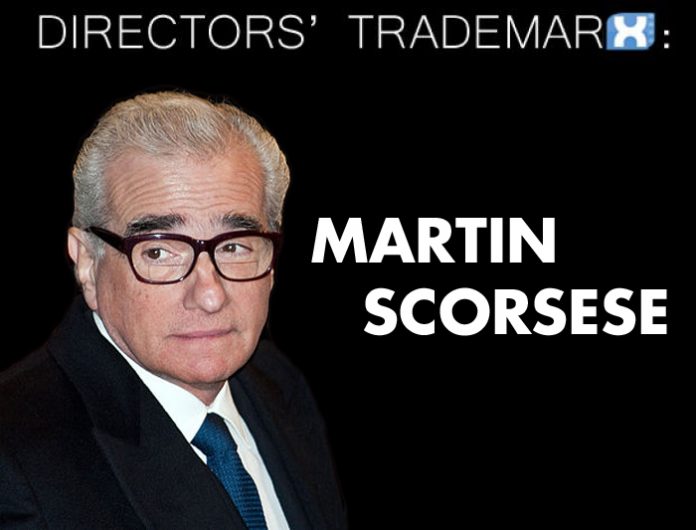
Directors’ trademarks is a series of articles that examines the “signatures” that filmmakers leave behind in their work. For this iteration, we are examining the works of Martin Scorsese as director.
Martin Scorsese was born on November 17, 1942 in New York City. From a young age he wanted to be a priest, but during college he made a switch to pursue a career in film. He attended New York University’s School of the Arts for his masters degree in film, and during that time he worked on several short films. As a student, he finished his first feature film, 1967’s Who’s That Knocking at My Door? At first the film was only seen at festivals, but would be an important stepping stone for Scorsese to hone his craft and get attention from studios and critics. After graduating, Scorsese went to Hollywood where he worked with Roger Corman to complete his second feature film, 1972’s Boxcar Bertha. This film didn’t make much of an impact in theaters, and convinced Scorsese to focus on original films. So, in 1973, Scorsese released the semi-autobiographical Mean Streets. This film was not necessarily a huge hit, but it received critical acclaim (including being called one of the best films of the decade) and made Scorsese a rising star in the film industry. It also began his working relationship with Robert De Niro.
In 1974, Scorsese released Alice Doesn’t Live Here Anymore, which became his biggest hit to date, and was well received by critics. His next feature film was Taxi Driver in 1976. Taxi Driver was a success in theaters, but more importantly it was very well received by critics and audiences. The film would earn Scorsese his first Best Picture Oscar nomination, and would be nominated for 3 other Oscars. Closing out the 70’s Scorsese directed a musical called New York, New York. Unlike his previous films, this one received mixed reviews and performed poorly at the box office. However, Scorsese redeemed himself with his next film, 1980’s Raging Bull. This film wasn’t a hit in theaters, but it was well received by critics. It earned 8 Oscar nominations, including Best Picture and Scorsese’s first Best Director nomination.
His next film was The King of Comedy, a black comedy released in 1982. It was the biggest flop of Scorsese’s career so far, although it did earn positive reviews from critics. His follow-up was another black comedy, After Hours, released in 1985. This film did find some success in theaters and received high praise from critics. Next, he released a book adaptation/sequel, 1986’s The Color of Money starring Paul Newman and Tom Cruise. This film became the most profitable Scorsese film to date, and received good reviews from critics. It also earned 4 Oscar nominations, but none for Scorsese. Next, Scorsese released the very controversial The Last Temptation of Christ in 1988. This had been a pet project for Scorsese for some time. Although the film wasn’t commercially successful, it did receive praise from critics and earned Scorsese his second Best Director Oscar nomination.
Scorsese returned to his crime drama roots with his next release, 1990’s Goodfellas. This film was successful in theaters, but more importantly because Scorsese’s most critically acclaimed film to date. It earned 6 Oscar nominations, including Best Picture and Best Director. Next, Scorsese went in a different direction with 1991’s Cape Fear. This film was the first blockbuster of Scorsese’s career, earning more than $180 million at the box office. In 1993 he released the romantic drama The Age of Innocence, to further critical acclaim. The film lost money at the box office, but it did earn some Oscar nominations, although none for Scorsese. In 1995, Scorsese returned to the crime drama with Casino. This was another big hit for Scorsese, and received positive reviews from critics. In 1997, he released Kundun, a biography on the 14th Dalai Lama. The film lost money in theaters, but was praised for its ambition and presentation. His next film was 1999’s Bringing Out the Dead, a supernatural thriller with Nicholas Cage. This film was another commercial miss for Scorsese, but did have mostly positive reviews.
Gangs of New York was released in 2002, finding the success at the box office which Scorsese had been missing with his previous two releases. The film would earn 10 Oscar nominations, including Best Picture and Best Director, but would not be seen by critics as Scorsese’s best work to date. Scorsese would build on this success, with his next film, 2004’s Aviator. Aviator was a smash hit in theaters, earning more than $200 million. It was also very well received by critics, and earned 11 Oscar nominations including Best Director and Best Picture. Scorsese would have even MORE success with his next film, 2006’s The Departed. In addition to being a hit in theaters, this film earned Scorsese his one and only Oscar win for Best Director, and also won the Oscar for Best Picture.
In 2010, Scorsese released his next film, Shutter Island. While this film was just as successful as his last film at the box office, it received mixed reviews from critics and would become his worst reviewed film in more than two decades. But Scorsese always seems to respond with his best work after his previous work isn’t as well received as typical for him. That would be the case with 2011’s Hugo. While not as much of a box office hit as his previous four films, it still made a profit while achieving high critical praise. It earned 11 Oscar nominations, including Best Picture and Best Director.
Scorsese released The Wolf of Wall Street in 2014. This film was another big hit for Scorsese, becoming his highest grossing film in theaters. It was also appreciated by critics, and became nominated for 5 Oscars, including Best Picture and Best Director. Next, Scorsese directed Silence, a film he had been trying to make since the 1990s. Silence didn’t achieve box office success, but it did achieve good reviews from critics, but only one Oscar nomination. Scorsese’s most recent film was 2019’s The Irishman, his most expensive and longest film to date. This film was released on the Netflix streaming platform, so it is difficult to tell if the film was profitable or not. However, the film was popular among audiences, and did receive high praise from critics. It was nominated for 10 Oscars, including Best Picture and Best director. Scorsese’s next film is Killers of the Flower Moon, which is expected to be released in 2021.
So the question posed is, if you are watching a Martin Scorsese film and you don’t know it, what are the things to look for that would identify it as such? Here are five of Scorsese’s trademarks as director, in no particular order:
New York, New York
Does the movie you are watching have “New York” in the title, or else the name of a place in New York City? You may be watching a Scorsese film. Ditto if the film takes place predominantly in the big apple. New York City is Martin Scorsese’s home. It was where he was born and raised, and as such it has become his biggest inspiration. Scorsese’s films capture the crowds, the grit, and the grime of the biggest US city. Growing up in such a crowded environment, Scorsese had first hand experience dealing with the true nature of humanity. And as a member of the New Hollywood movement, his perspective to show the city realistically, rather than idealistically, was embraced by critics and audiences. Really, his ability to depict crime/desperation/struggle in an entertaining way is the crux of all of his films, and it stems from his own experiences in New York City.
Scorsese grew up in Little Italy, and so of course many of the characters and settings in his films depict immigrants and the experiences of immigrant families. As a third-generation Italian-American, Scorsese has made many films depicting the life of Italian-Americans. Scorsese has Italian-American primary and secondary characters in Who’s That Knocking at My Door?, Mean Streets, Taxi Driver, Raging Bull, Goodfellas, Casino, and The Irishman. Speaking of The Irishman, Scorsese has often focused on Irish immigrants as well. Heavy immigration from Ireland in the late 19th century and early 20th century has had a significant impact on the city of New York. Movies like Gangs of New York, and The Departed reference the impact of the Irish on the American establishment.
Whether it is focusing on the bright lights (New York, New York, Raging Bull, or The King of Comedy), the success which can be earned on Wall Street (The Wolf of Wall Street), or the disturbing reality of life on the streets at night (Taxi Driver, After Hours, Bringing Out The Dead), Scorsese has touched on many of the most famous attributes of his home city. As well as moving around the city geographically, Scorsese’s films have often explored the city at various socio-economic levels. Consider Age of Innocence a look at the city’s elite towards the second half of the 19th century, and in contrast Gangs of New York focusing on the poor around the same time. The contradiction between the poor and the rich is seen further in Mean Streets, Raging Bull, Taxi Driver, The King of Comedy, Goodfellas, and The Wolf of Wall Street. In most of those films we follow a main character who goes in the general direction of rags to riches.
Depiction of Religion
Based on the subject matter of his films, it may be hard to believe that Scorsese had wanted to be a priest when he was young. To escape the hectic streets, Scorsese spent much of his childhood in church, and devoted a significant part of his life to religion. While Scorsese chose to pursue film as a professional, religion remained an important part of who he is. In many ways, Scorsese’s choice to move his life away from religion is something he has explored often in his films. Along with the inspiration he took from his upbringing in New York City, Scorsese’s own internal conflict with his religion is central to the way he makes his films.
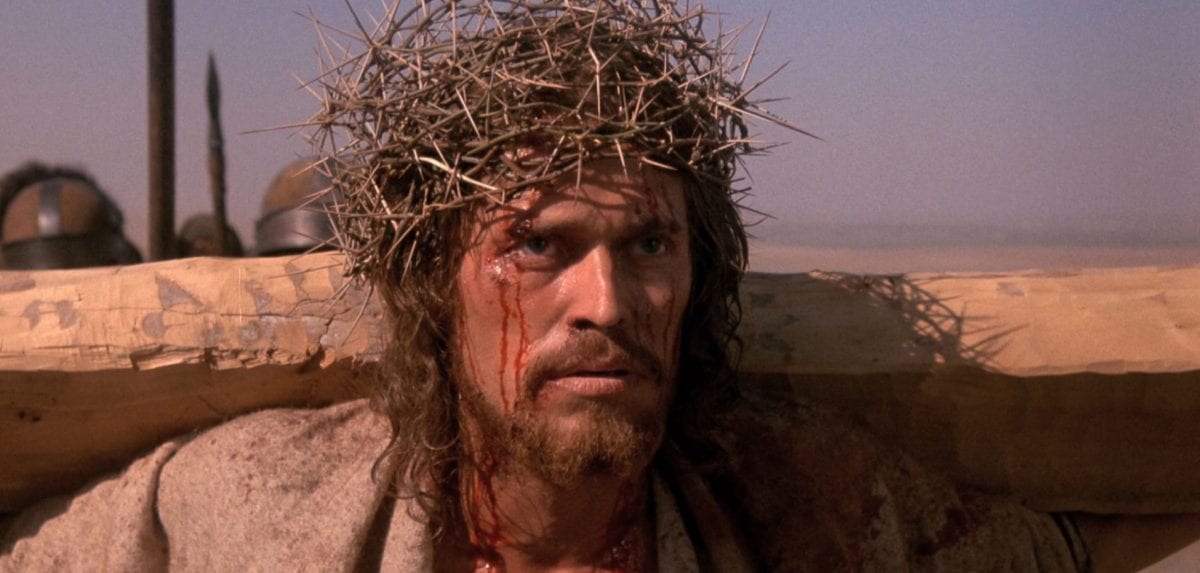
Most obviously he has made several films with primarily religious topics. For as long as Scorsese had interest in film, he had wanted to make a film depicting the life of Jesus Christ. He had become a fan of the 1955 novel, The Last Temptation of Christ, and bought the film rights in the 1970’s. This book is a fictional take on the life of Jesus Christ and explores the weaknesses of man and assigns them to Jesus. Finally in 1988 he released The Last Temptation of Christ. The book and the film argues that man is inherently evil, and as we can see in the corrupt characters found throughout Scorsese’s filmography, this is something he agrees with. Scorsese’s other primarily religious films include 1997’s Kundun, which tells the story of the life of the 14th Dalai Lama, and Silence, which follows the attempt of two catholic missionaries to find a missing priest in feudal Japan.
In all three of these films, the main characters experience persecution for their religious beliefs. More importantly, they have to decide between their lives and continued religious devotion. In The Last Temptation of Christ, the connection is obvious – Jesus must sacrifice himself in order to fulfil God’s plan for him. In Kundun, the Dalai Lama must decide between staying in Tibet and witnessing the atrocities against his people, or fleeing his homeland to protect them and himself. Likewise, in Silence, when captured by the Japanese, the Priests are forced to abandon their religion or else their followers are tortured. None of these are easy decisions to make, and the ultimate decisions they do make and the struggle the internal conflict inflicts on their body and spirit is what ultimately undoes them (not their decision itself).
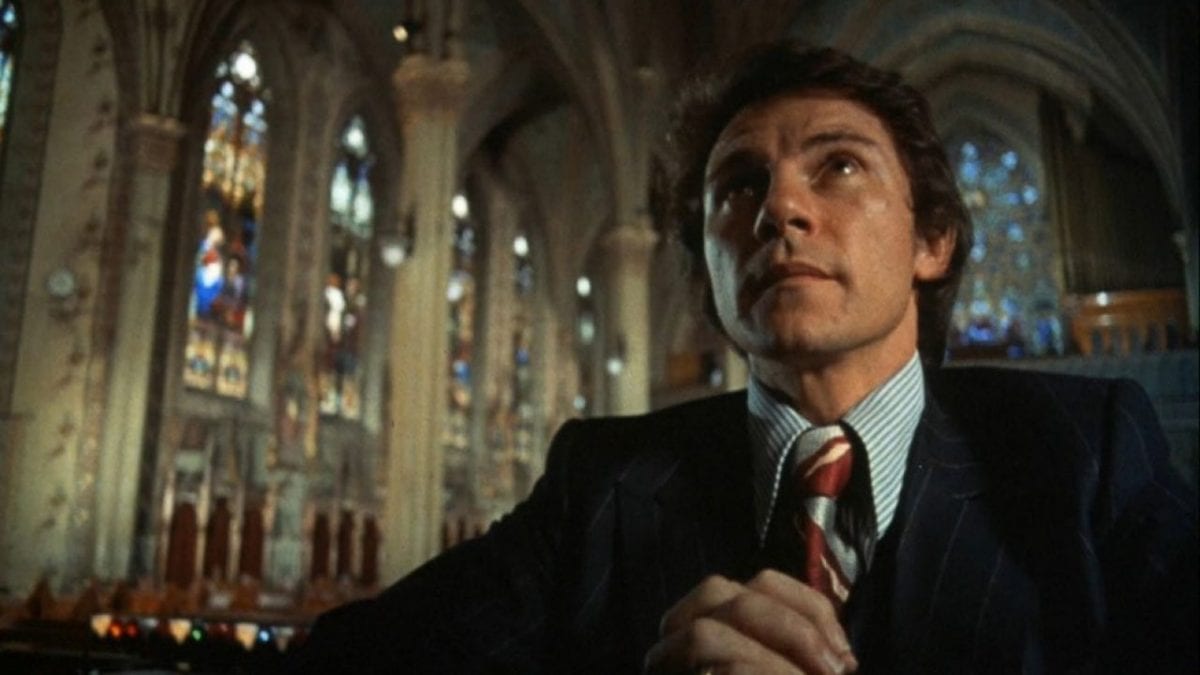
This theme of the cost of religion being pain is found throughout Scorsese’s work, I think because it is something the director himself has struggled with. In Mean Streets, the main character Charlie struggles with his devotion, and feels like his sins should not be so easily dismissed. As a result, he often inflicts pain on himself by touching fire to simulate the pain of Hell. His guilt also motivates him to stick up for his cousin, rather than let him struggle like everyone else has. Catholic guilt is also found in Scorsese’s debut, Who’s That Knocking at My Door? where the main character refuses his girlfriend after learning that she had been raped. In Taxi Driver, Travis Bickle tries to fight against the injustice around him. In Cape Fear, Max Cady seeks revenge against the mistakes of his former lawyer, and has tattoos with biblical references of vengeance. In Gangs of New York, it is the catholic church which houses the poor Irish immigrants, and they have to resort to violence in order to maintain their ways.
Witness the crosses and religious imagery which is often found in the jewelry, on the walls, and in the backgrounds of Scorsese’s film. These religious images allude to the fact that the characters are religious (or at least had a religious upbringing), and yet their behavior betrays those religious teachings. Consider Raging Bull where the main character is guilty of almost every sin imaginable. Scorsese makes the audience hate the main character because of his sins, yet he pays for them with his own blood. There is a scene when he returns to fighting his old nemesis just for the purpose of getting beat to a bloody pulp – he seems to revel in the pain and his own strength against it. In Age of Innocence, Archer is caught between wanting to have an affair or honor his vows to his fiancé. At one point he decides to try and convince his fiancé to get married as soon as possible. His motivation is partially an effort to prevent himself from the temptation of the affair, in a sense punishing himself. In Goodfellas, Henry Hill’s girlfriend is Jewish and he is Catholic. When meeting her parents he has to hide his cross, and is therefore essentially dismissing his religion for personal gain.
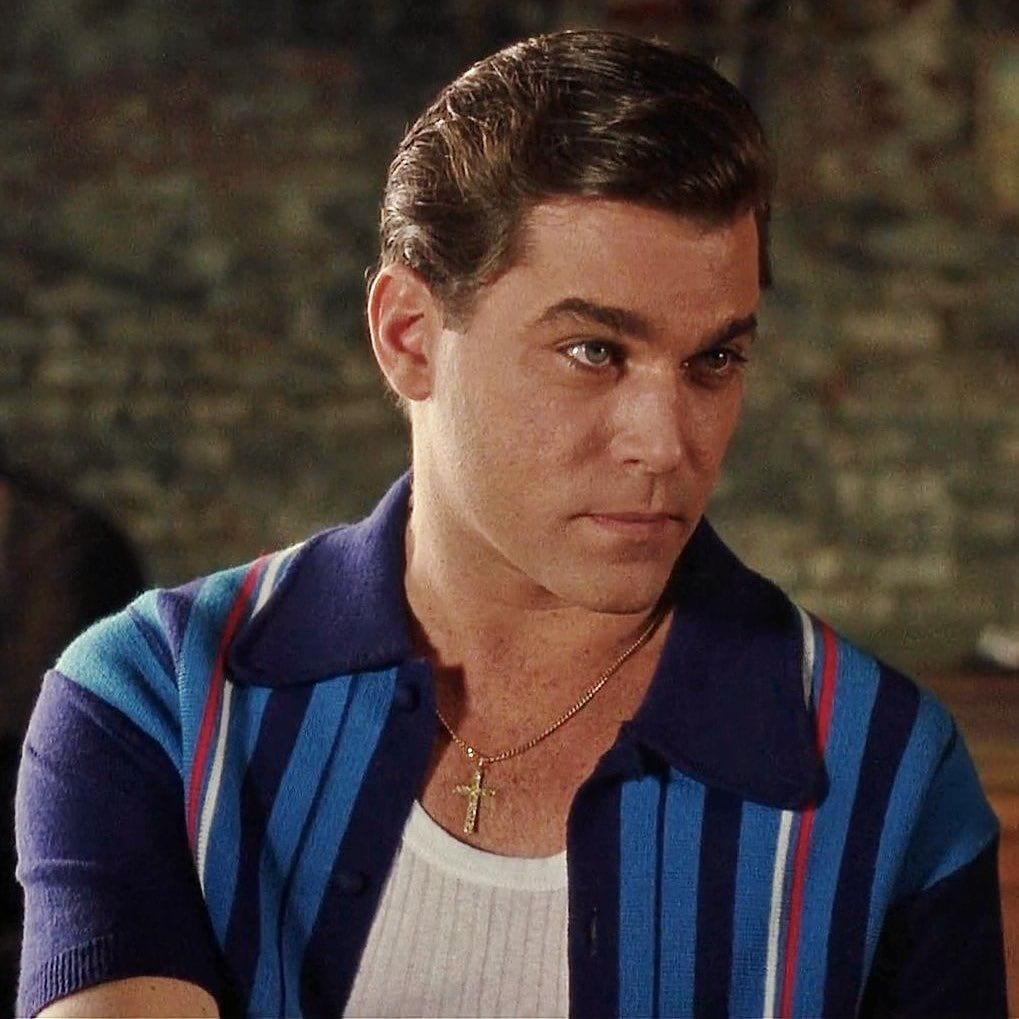
I find it interesting that except when the topic is expressly religious, Scorsese’s films have gotten generally less religious over time. In many ways it is a reflection of Scorsese’s move away from religion, and his early life devoted so heavily towards it. However, even when there is no explicit religion in his films, Scorsese makes use of religion-like constructs. Consider the loyalties and devotion required in crime organizations as depicted in Goodfellas, Casino, and The Departed. Consider Jordan Belfant’s complete devotion to money in The Wolf of Wall Street, and the “cult” he creates for it, with himself being the leader worshipped almost like a God. In The King of Comedy, Rupert Pupkin worships famous comedian Jerry Langford like a God. He has cardboard cutouts of him in his room, and devotes his entire life – including sacrificing everything he has – in order to become just as famous.
Anti-Hero Protagonists
Scorsese is best known for his crime dramas. However, even if he isn’t making a movie about gangsters, his protagonists tend to have more despicable qualities than redeeming ones. As a result, we can label them often as anti-heros. One could argue that if Scorsese changed the perspective of many of his films, his main characters would end up as the antagonists instead of the protagonists. They are often criminals, or become criminals. They can be mean, womanizing, self-indulgent, narcissistic, and manipulative. Scorsese is interested in people who gained popularity through nefarious means. More importantly, Scorsese’s films find characters who are initially well-intentioned, but their blind ambition sends them into ruin before they realize how far they’ve gone.
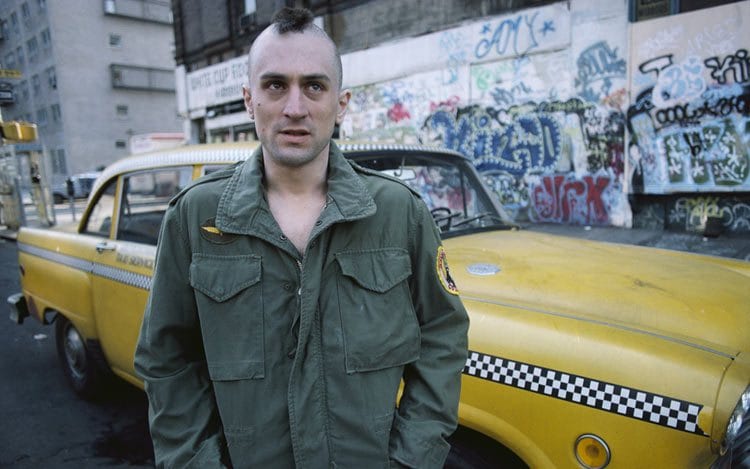
Scorsese’s most famous anti-hero protagonist may be Travis Bickle from Taxi Driver. Bickle becomes disillusioned with the reality of life in the city which causes him to develop behavioral issues and act out by attempting to kill a politician. That plot fails, but his rage continues and is directed towards an attempt to rescue a child prostitute. In the end, it is difficult to classify Bickle as either good or bad, despite actions which could be considered one or the other. In Goodfellas, the main character Henry Hill states how he “always wanted to be a gangster.” But initially he was attracted to a life of crime because he saw it as a way to make a better life for himself. In that manner, Scorsese characterizes Hill like most of us – just wanting a prosperous future with a little adventure in it. We see a similar drive in the main characters in Mean Streets, The Irishman and Gangs of New York, all of which begin their lives of crime with a sort of naïve outlook on organized crime as only a means to an end.
Raging Bull focuses on boxer Jake LaMotta, whose violent outbursts and jealousy lead to abuse of his wife and brother. The Wolf of Wall Street sees Jordan Belfort use his knowledge of stock trading to cheat and swindle innocent people in order to make millions. “Ace” Rothstein from Casino is a mobster who uses illegal business practices at his casino and threatens his competition to make more profit, while the main characters in The Color of Money are all hustlers. In The King of Comedy Rupert Pupkin kidnaps a famous comedian in order to get his own shot at the spotlight, and in New York, New York Jimmy Doyle cons others into getting his way and is abusive. In The Age of Innocence, the main character is driven by his urge to commit adultery.
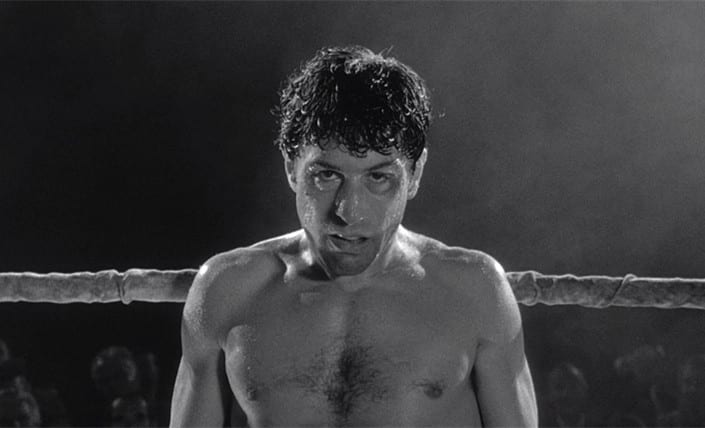
Really, a common thread between (most) of Scorsese’s main characters are their selfish illusions of grandeur and how their desperation to achieve their dream causes them to do unsavory things. In addition to the examples I have already given, consider Griffin Dunne in After Hours who is tempted by a young woman he meets at a café. While not necessarily a criminal like in Scorsese’s other films, he is prepared to go to extreme lengths for his own selfish desires and to prevent pain/struggle for himself. Or you have Howard Hughes in The Aviator. Hughes’ obsesses over making the best films, and fastest and biggest planes. He spends and pushes himself excessively in pursuit of these goals, at the detriment to his own well being and those around him. Likewise, it is the idea that they have more faith and a stronger fortitude which motivates the two missionaries in Silence to travel to Japan in search of the priest which has denounced his faith. They believe they can make a difference, but don’t realize until it is too late how their own selfish drives are causing harm to others.
But Scorsese’s protagonists are not the only ones who exhibit character flaws which position them against expectations. When Scorsese depicts people of authority, they are often just as crooked as his protagonists. Consider the corruption shown in both politics and in the police force in Gangs of New York, or how Colin Sullivan is the mob’s mole inside the Massachusetts Police Force in The Departed. In Goodfellas, Casino, and Mean Streets he shows his characters bribing the Police. In The Last Temptation of Christ, the film depicts the Cleansing of the Temple when Jesus and his followers drive out the money changers and merchants who were using religion for their material benefit at the Temple of Jerusalem. The scene depicts the temple authorities, who are dressed in lavish clothes with jewels hanging from their necks – showing how they have profited from their positions.
Betrayal in the Triumvirate
Because of his use of anti-hero protagonists, Scorsese’s characters tend to get stabbed in the back quite often. Their willingness to commit immoral or criminal acts to achieve personal gain means that others are able and willing to do the same to them. In almost all of Scorsese’s films, the climax of the film has to do with a betrayal of one of the main characters by another main character who is in a position of trust. This betrayal is usually tied into a bigger twist which is revealed at the end of the film. Sometimes the betrayal itself is the twist, at other times it is a realization that comes from that betrayal. Finally, Scorsese’s scripts are usually written with three main characters, and it is generally one of those three characters which betrays the other two, or causes the others to be compromised.
***WARNING SPOILERS FOLLOW***
In Mean Streets the three main characters are Charlie, Johnny Boy, and Johnny’s cousin Teresa who is romantically involved with Charlie. Johnny betrays Charlie’s trust by failing to repay his debts and by taunting the man who he owes money to. The twist isn’t the fact that Johnny necessarily betrayed his cousin, but that Charlie thought he was doing the right thing and it ends up costing him.
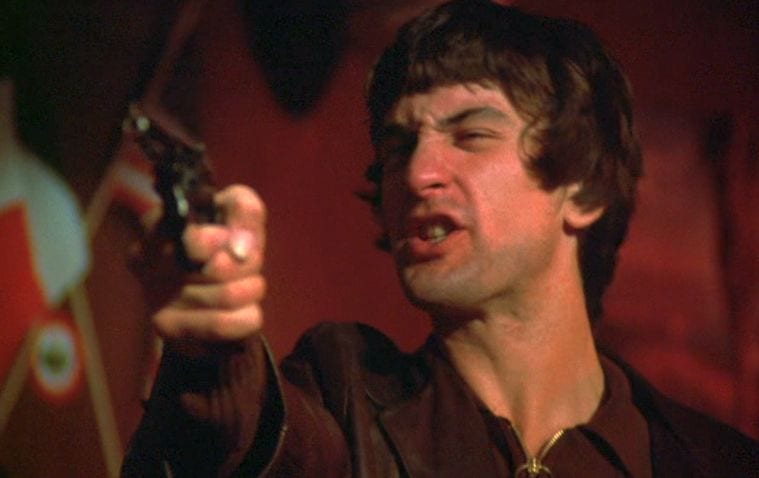
In Raging Bull, the main characters are Jake La Motta, his brother Joey, and his second wife Vickie. Jake’s paranoia causes him to act out against (and thus betray) his brother because he thinks Joey is sleeping with Vickie. This is not a shock, or a twist by itself – indeed, Jake’s life is all about fighting against what he perceives as all of the wrongs against him and this is an extension of that. Instead, the twist comes at the end of the film when Jake is essentially washed up. Despite all of the terrible things he has done, and the ruinous implications, he considers himself redeemed. Instead of having to fight to earn the peace of mind he sought, he had to lose it all.
In The King of Comedy, the trio is Rupert Pupkin, Jerry Langford, and Masha. Both Pupkin and Masha are rabid fans of Langford and go to extreme lengths to try and get his attention. Ultimately, Pupkin takes advantage of Masha to use her help to kidnap Langford in order for Pupkin to get an opportunity to appear on his show. The twist is that the stunt actually works! Although Pupkin has to serve time for his crimes, his antics result in him becoming the famous comedian he always fantasized about becoming.
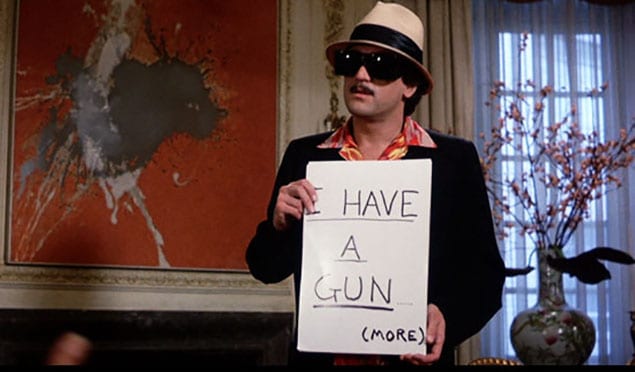
Eddie, Vincent, and Carmen are the central trio in The Color of Money. Eddie is a pool playing hustler savant, Carmen is his girl friend/collaborator, and Eddie is the veteran who takes Vincent under his wing to show him how to make money with his talent. At the end of the film, Vincent plays against Eddie in a tournament and Eddie wins – convincing the audience that he has not lost his talent due to old age, and revealing the whole time he was stringing Vincent along to goad him into the match to prove himself. However, it is revealed that Vincent lost on purpose in order to win money he bet on Eddie.
In Goodfellas, the trio is Henry Hill, Jimmy Conway, and Tommy DeVito. Henry is established to be the trustworthy one – in an early scene he is congratulated by the mob after being arrested for a crime and not naming names. Tommy is a hot head whose pride causes him to kill a made man and puts a target on his back. Jimmy is ruthless and murders other collaborators rather than share profits with them. In the end though, out of desperation it is Henry who does the betraying by agreeing to give testimony against his mob connections.
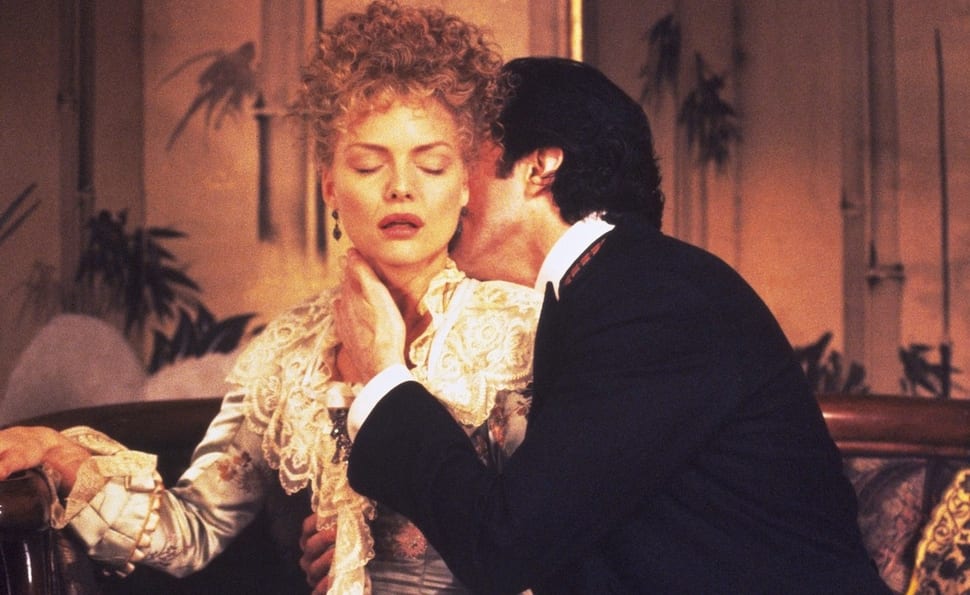
In The Age of Innocence, the trio is Archer, his fiancé May, and May’s cousin the Countess Olenska. Archer falls for Olenska after he is engaged, but can’t compromise his pending marriage because it would put him in unfavorable social standing and would go against the wishes of his family. Still, he is heavily tempted to have an affair (and even call off his marriage) because he believes Olenska is his true love and she feels the same about him. However, May finds out about the affair and comes up with a way to prevent it by lying to her husband. It is only later on in life that Archer finds out the truth about how his own wife had misled him in order to prevent him from living a blissful life with Olenska.
In Gangs of New York it is Amsterdam’s best friend which betrays him by revealing Amsterdam’s true identity to Bill the Butcher. In The Departed Billy Costigan reveals that Sullivan is the mole in the Police department, only to get killed by a second mole. In Silence, the two missionaries are betrayed by their guide, Kichijiro. And in The Irishman, the main trio is Jimmy Hoffa, Russel Bufalino, and Frank Sheeran. Hoffa and Sheeran are good friends, but Sheeran is loyal to Bufalino. When the mob is upset with Hoffa, they assign Bufalino to kill him. Bufalino forces Sheeran to betray Hoffa.
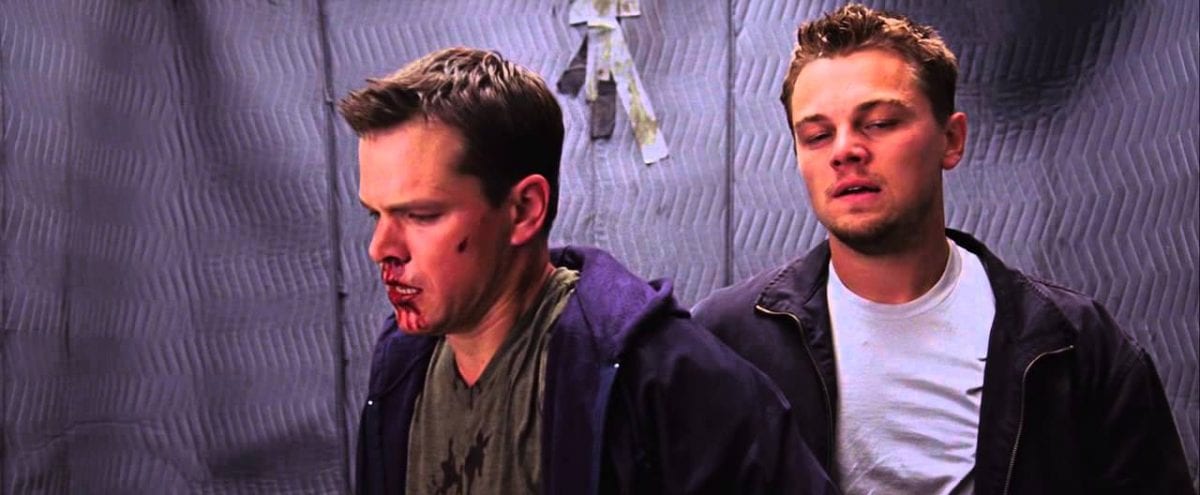
But the biggest betrayal and twist in any Scorsese film has to be that which is depicted in The Last Temptation of Christ. In this film, the trio is Jesus, Jedas, and Mary Magdalen. Traditionally it is believed that Judas betrayed Jesus to the Romans who then crucified him. But in this retelling of the biblical tale, Jesus realizes he must sacrifice himself and so he asks Judas to betray him to the Romans so that he will die for mankind’s sins. This is very difficult for Judas to do because of his devotion to and love of his friend, but ultimately he agrees. However, while on the cross in the moments before death, Jesus is saved by his guardian angel and told that God had decided to spare him and will offer him a normal life instead. Later in life when Jesus is on his deathbed, it is revealed that the guardian angel was Satan and Jesus had not fulfilled his role as God had expected of him after all. As a result, in this case it is Jesus who betrayed Judas by giving into temptation, not the other way around.
The King of Collaborators
Perhaps the most iconic feature of Scorsese’s films is not the way they look, the way he places and uses the camera, or even the types of stories he has told. Scorsese’s films are easy to identify just by looking at the cast list. I would argue that no other major film maker has collaborated as much as Scorsese has. As he has grown his craft, he has formed working relationships with many people in many different fields both in front of and behind the camera.
Scorsese’s most obvious collaborations are those with actors. Scorsese has worked with Robert de Niro on 9 feature films, and one short film. Scorsese has featured Leonardo DiCaprio in 5 films to date, and is currently working with Scorsese on his next film. Joe Pesci has been featured in 4 of Scorsese’s films, and Harvey Keitel has been featured in 6 films. Harry Northup and Victor Argo also appeared in 6 of Scorsese’s films. Other notable actors who have worked with Scorsese on more than one film include David Carradine, Liam Neeson, Daniel Day Lewis, Frank Vincent, Verna Bloom, and J.C. MacKenzie.
But if you don’t recognize a Scorsese film by who is cast in it, chances are you can identify the film by who wrote it, who produced it, or who edited it. Scorsese’s longest collaboration to date is his collaboration with editor Thelma Schoonmaker. Schoonmaker was a classmate of Scorsese’s when he was in film school. She was assigned to help him edit one of his student projects, and even helped him with his feature film debut Who’s That Knocking at My Door? She helped him finish the editing on Taxi Driver, but was uncredited. However, Schoonmaker became Scorsese’s only choice for editor after that. Starting with Raging Bull, Schoonmaker has edited all of Scorsese’s films. Her specialties include freeze frames and dissolve cuts.
On the writing side, Scorsese has collaborated with Mardik Martin in 3 films, Nicholas Pileggi on 3 films, Jay Cocks on 3 films, and Paul Schrader for 4 films. He has worked with legendary cinematographer Michael Ballhaus 7 films, cinematographer Michael Chapman on 2 films, and cinematographer Rodrigo Prieto on 3 films (plus an the upcoming Killers of the Flower Moon). He collaborated with costume designer Sandy Powell on Gangs of New York, which was nominated for an Oscar for costume design, and has since worked with her on every film he’s made except for Silence (7 films). He has worked with producer Irwin Winkler on 6 films, and he also worked with producer Barbara De Fina (who was Scorsese’s wife for a period of time) on 10 films.
But an obvious clue that you are watching a Martin Scorsese movie is an appearance by Martin Scorsese himself! In a majority of his films, Scorsese gives himself a cameo appearance, or you hear his voice as a narrator. In the films in which he has a cameo role, the role is usually a tongue-and-cheek nod to his interests as a filmmaker (it could be a nod to the cameo work of Alfred Hitchcock in his own films). In Who’s That Knocking at My Door? where a young Scorsese portrays a gangster, something his later filmography would show he is fascinated by. Later roles would continue his exploration into the darkness of society. In Mean Streets he portrays a hitman that attacks the main characters. In Boxcar Bertha he is seen at a brothel, and in Taxi Driver he plays a perverted taxi passenger who watches his wife through a window and spouts hateful remarks.
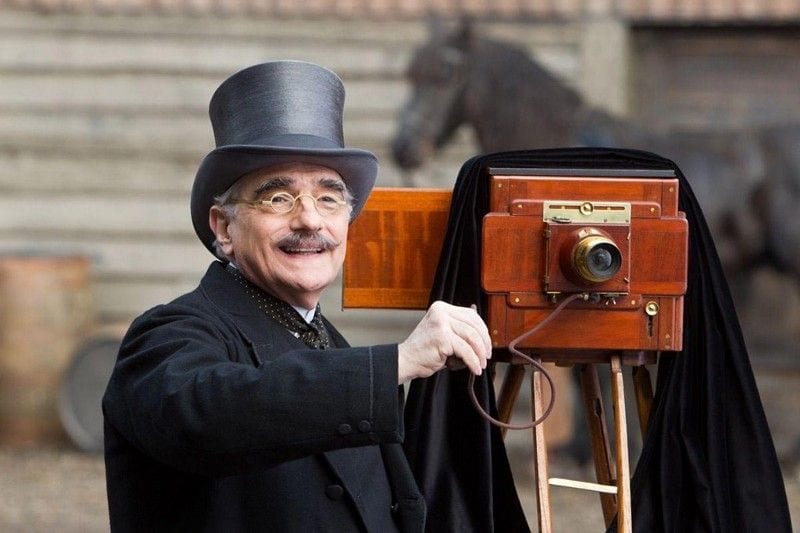
But later Scorsese cameos would focus on his role as director. In Raging Bull he plays a stagehand who tells Jake La Motta it is time for him to head to the stage, and in The King of Comedy he is a television director. In After Hours he is a spotlight operator, in both Age of Innocence and Hugo he is a photographer, and in The Aviator he is a projectionist. He is briefly shown as a pool player in The Color of Money. He would make fun of his burgeoning popularity by depicting a rich man who is robbed in Gangs of New York, and the voice of one of Jordan Belfont’s “victims” in The Wolf of Wall Street. He narrates The Color of Money, makes the opening statement in Mean Streets, and is heard on the dispatch in Bringing Out the Dead. And while there are several films in which Scorsese does not appear in any form, there is a commonality worth noting that he does not appear in any of his religious films.
Want more Directors’ Trademarks?














